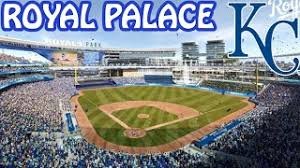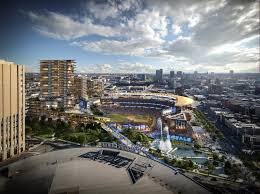Kansas City is abuzz with excitement as plans for the Royals‘ new stadium take shape. This ambitious project promises not only to redefine the city’s sports landscape but also to deliver significant economic and cultural benefits. With a focus on modern amenities, community engagement, and strategic urban development, the Royals’ new stadium is set to become a beacon for fans and a hub for Kansas City’s future growth.
A Vision for the Future

The decision to build a new stadium stems from a desire to create a state-of-the-art facility that meets the evolving needs of players, fans, and the broader community. The Royals have been an integral part of Kansas City’s identity since their inception in 1969, and their current home, Kauffman Stadium, has witnessed decades of baseball history. However, as one of the oldest ballparks in Major League Baseball, it’s time to embrace modernization.
The new stadium will incorporate cutting-edge design elements, offering an enhanced experience for attendees. From improved seating arrangements and premium viewing options to expanded dining and entertainment areas, the facility aims to provide a dynamic environment that caters to a diverse audience.
Location, Location, Location

One of the most debated aspects of the new stadium project is its location. While Kauffman Stadium is situated at the Truman Sports Complex, the Royals’ management has expressed interest in relocating closer to downtown Kansas City. A downtown stadium would align with trends seen in other MLB cities, where urban ballparks have revitalized surrounding neighborhoods.
A downtown site could attract increased foot traffic to local businesses, boost tourism, and provide fans with easier access via public transportation. The integration of the stadium into the city’s urban fabric has the potential to create a vibrant district that remains active year-round, hosting concerts, community events, and other non-baseball activities.
Economic Impact
The construction and operation of the Royals’ new stadium are expected to generate substantial economic benefits for Kansas City. The project will create thousands of jobs during the construction phase and support ongoing employment through stadium operations, retail, and hospitality services.
Moreover, the new facility is anticipated to increase revenue from ticket sales, sponsorships, and media rights. The influx of visitors to the stadium could also lead to a surge in spending at local hotels, restaurants, and shops, contributing to the city’s economic vitality.
Fan Experience Redefined
Modern ballparks are no longer just about the game; they’re about creating memorable experiences. The Royals’ new stadium will prioritize fan engagement with features like:
Interactive Technology: Digital screens, augmented reality experiences, and mobile apps to enhance fan interaction.
Premium Amenities: Luxurious suites, rooftop terraces, and VIP lounges for an elevated experience.
Family-Friendly Spaces: Play areas and kid-friendly zones to make the stadium welcoming for all ages.
Sustainability Initiatives: Green design principles, such as solar panels and water conservation systems, to minimize the environmental footprint.
These enhancements aim to attract a broader demographic, from die-hard baseball fans to casual attendees looking for entertainment options.
Preserving the Royals’ Legacy

While the new stadium represents a leap forward, the Royals are committed to honoring their storied past. Plans include a Hall of Fame exhibit that will celebrate the team’s history, including iconic moments like their 1985 and 2015 World Series victories. This ensures that the legacy of Kauffman Stadium lives on, even as the team moves to a new home.
Challenges and Considerations
Building a new stadium is not without its challenges. The projected cost of the facility is estimated to be in the billions, raising questions about funding sources. Public financing, private investments, and potential tax increases are all on the table, and striking the right balance will be crucial to gaining community support.
Additionally, there are concerns about the displacement of residents and businesses if the stadium is built downtown. Transparent communication and thoughtful urban planning will be essential to addressing these issues and ensuring the project’s success.
Community Engagement
The Royals have emphasized the importance of community involvement throughout the planning process. Town hall meetings, surveys, and public forums are being conducted to gather input and address concerns. The goal is to create a stadium that reflects the needs and aspirations of Kansas City residents.
Broader Implications for Kansas City
The Royals’ new stadium is more than just a sports venue; it’s a catalyst for urban renewal and cultural enrichment. By fostering economic growth, enhancing community pride, and attracting national attention, the project has the potential to elevate Kansas City’s status on the national stage.
Conclusion
The Royals’ new stadium represents an exciting chapter in Kansas City’s history. With a vision rooted in innovation, community engagement, and sustainability, the project promises to deliver a world-class facility that serves as a source of pride for generations to come. As plans move forward, the Royals are poised to not only enhance their legacy but also contribute meaningfully to the city’s future.
